 Securing your 900 lb. Cessna 120 on a backcountry strip by tying it down to thin bushes and exposed roots that are sticking halfway out of the dirt is better than not tying down at all, especially when the wind is blowing. It’s kind of like clipping those old rusty bolts that you come across on certain rock climbs. You know that they probably won’t hold you if you fell, but you clip them anyway, mostly for peace of mind.
Securing your 900 lb. Cessna 120 on a backcountry strip by tying it down to thin bushes and exposed roots that are sticking halfway out of the dirt is better than not tying down at all, especially when the wind is blowing. It’s kind of like clipping those old rusty bolts that you come across on certain rock climbs. You know that they probably won’t hold you if you fell, but you clip them anyway, mostly for peace of mind.
Bush flying is actually a lot like climbing, at least it feels that way to me. They’re both highly technical activities that involve managing inherent risk in the possibility of severe danger, they both require a cool head and an extreme level of concentration if you want to push your limits, they both offer unique personal rewards and they both require lots of gas money.
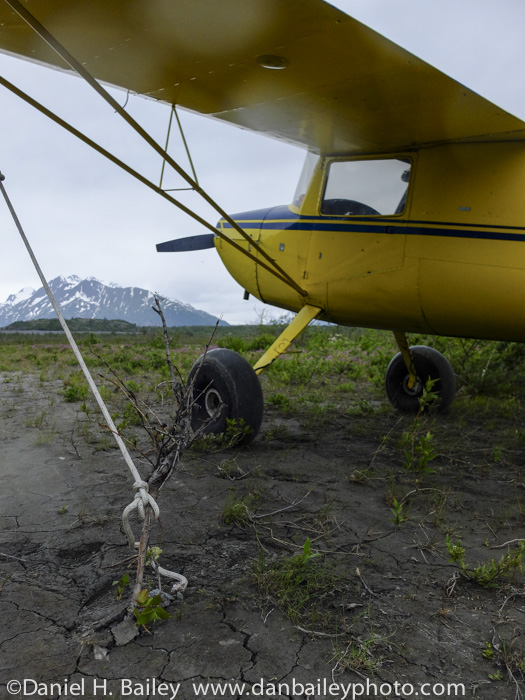 The bushes and half exposed roots on this strip seemed pretty flimsy, but combine three with equal tension and they actually kept my little Cessna from rocking too much in the 20-30 mph headwind. It at least gave me enough mental security to walk away and goexploring for 5-6 hours.
The bushes and half exposed roots on this strip seemed pretty flimsy, but combine three with equal tension and they actually kept my little Cessna from rocking too much in the 20-30 mph headwind. It at least gave me enough mental security to walk away and goexploring for 5-6 hours.
The wind was really cranking as I set up to land on this short, 700′ curving patch of packed mud. It was my second try, and after being pushed around quite a bit on my first attempt, I was prepared to give up and go somewhere else rather than try and force it. That’s asking for trouble.
The thing with flying is that you never HAVE to be anywhere. You should always be open to changing your plans. My own rule is this: If it doesn’t look good after three tries, it’s not going to look any better after four or five. Coming around for attempt #2, I pulled the throttle, set up a steady rate descent, did my dance on the rudder pedals to keep it straight. When the wheels touched, I pulled back on the yoke, pressed my toes on the brakes and slowed to a stop.
With excited nerves, I shut down the engine, which always feels more committing than even landing. Although I was faced right into the wind, the plane was still bucking a bit. That’s when I got out my ropes, pushed the plane back towards the bushes and tied her down.
My goal with this afternoon outing was to go exploring on the Knik Glacier and shoot some icescapes. Getting onto the ice isn’t always easy, though. I came equipped with shorts and sandals in order to wade and slosh through the streams and grassy swamps that lay between the strip and the dry mudflats and hills of the actual moraine. In Alaska, there’s an easy summertime rule of thumb to follow: if it’s flat, then it’s wet. Staying totally dry is not an option if you want to go anywhere really fun, especially when trying to navigate near enormous melting ice sheets that pump out millions of gallons of water every hour.
For camera gear, I brought along my Fujifilm X20 and the Fujifilm XE-1 with the wideangle XF 14mm lens that I’ve been borrowing. I’ve been shooting quite a bit with this combo lately. I like to use the XE-1 for shooting high quality RAW imagery and detailed landscapes, and the X20… well, I just can’t leave the house without it.
On my flyover approach, the route from this strip over to the Knik seemed pretty straightforward. I knew that I’d have to do some wading, but I also knew that the water wasn’t very deep. Wading is better than swimming, so it seemed doable. That said, it still took way longer than I’d hoped to cover the 500 or so yards of muck through the marsh and around a deep beaver dam pond. Everything looks easier (and shorter) from the air.

A frustrating hour and a half of meandering back and forth finally spit me out on dry earth, where I changed back into boots and Carhartts.
I had to bushwhack over some obvious moose and bear trails as I crossed through a couple of tree bands, but didn’t see any animals, just racks, scratch marks and poop. After a few minutes, I emerged onto the top of the moraine and got my first close up view of the glacier proper.
A moraine is a colossal rolling field of rock, dirt and mud that’s interspersed with exposed walls of black, gravel encrusted ice. It’s the area where glacier hits land and piles all those pieces of mountain that it’s carved away over the years into a giant, disheveled debris pile. Excited to have finally made it this far, I enthusiastically picked my way through the chaotic mess and stopped to take a few photos along the way. Both of these shots below were made with the XE-1.
Shooting in RAW really helps here, because there’s so much contrast between the dark rock and the white, overcast sky. As good as the image processor is on the Fuji X cameras, it’s still too much latitude to show both. The sky will blow out if I’m shooting JPEGs, or else the I’ll lose the lower tones of the foreground.
Eventually, I made my way onto the actual ice. This section of the glacier is flat and smooth enough that you could drive a truck on it. Only tiny rolls, thin cracks and shallow grooves break the gray surface. The deeper chasms are narrow enough to step across and offer brief glances down into endless blueness that’s more blue than anything else in nature. A thin layer of rock and sand on top made traction good with regular shoes, although just to be safe, I put on those little rubber shoe spikeys.
Treading with fascination across this surreal landscape, which I’ve flown over many times, I came across one moulin that spilled a small torrent of water down into a seemingly bottomless 2′ x 3′ hole that would surely swallow you forever if you fell in. I cautiously stood on the graveled edge and took pictures, although in the back of my mind I pondered the mixture of wonder and utter terror that would befall me if I accidentally slipped in and disappeared from the visible portion of the earth.
Even with the shoe spikes… even if I could somehow chimney may way back up, I’d surely freeze first. The only consolation is that being on the lower part of the glacier, it would probably only take about five to ten years to be spit out into the Knik river.
Moving on, I walked and ran over the enormous slab, making my way towards the roll a few hundred yards up glacier where the ice was much more textured and broken, dramatic and dirty. I was a able to walk right up into the entrance of these surreal white hallways over small trickles of meltwater and take close up pictures of these immense landscapes.
As I’ve said before, I’m finding the Fuji XE-1 to be a really enjoyable camera for shooting landscapes. I love the classic feel of the camera in my hands, and it’s so easy to switch between the four PSAM exposure modes. I’m very impressed with the quality of the files too, in addition to carrying lots of sharpness and detail, the just have a really appealing look and lots of latitude that you can bring out with RAW processing.

The overcast light wasn’t great, although it added ominous power to this tortured landscape that so few people get to see up close. I could have spent hours exploring here, but time constraints and an approaching storm from the other side of the valley tilde me that I should turn back.
I got off the mangled black edge of the ice quickly, but then had to tread quite a ways back over the heavy rolling piles of rock and mud to get back to the end of the moraine.
Having been too enthralled with exploration and photography, I had yet to eat my lunch, so I downed my baguette sandwich and homemade rhubarb energy bars as I hiked. Once I made it back to solid ground, I retraced my bushwhack trail through the wooded bands, but not before looking closely and trying to pick out a better way across the marsh. From my higher vantage point, I was able to see what looked like semi continuous dry mud patches that drew a straighter line back towards my plane and avoided the wide beaver dam pond on the left side of this photo that I spent so much time herring around earlier. (You can see my plane as the tiny yellow dot just below the wide gravel bar fan near the center of the photo.)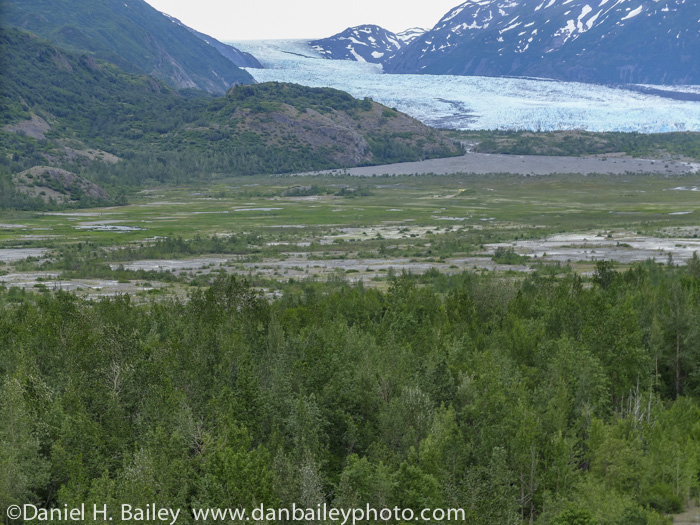
I also took note of the storm that was creeping in from the southwest. I didn’t want to dally, and spending an hour and a half just to get back to the plane could make things interesting. Plus, I’d miss dinner. My recon efforts paid off. I ran most of the way, and only had to don my sandals and slosh through shallow water and mud for a couple hundred yards before I reached the strip. Total return time from the base of the moraine: 30 minutes.
I hastily air dried my muddy feet, stuffed them back into socks and boots, then untied the plane, which was still held fast by flimsy bushes and roots, hand propped the engine and taxied back to the other side of the strip. I figured that the strong winds would considerably lessen my takeoff distance, but I wasn’t quite prepared to be airborne so quickly. After gunning the throttle, I floated into the air in what seemed like less than 100′. I also wasn’t prepared to get blown over towards the bushes by the slight crosswind. Good thing it was’t coming from the other direction, or it would have blown me into to the trees on the right side of the to way. As it was, my wingtip was already grazing leaves during my ground roll.
After climbing out, I turned north, crossed over the glacier and cruised back down the Knik river valley with the wind on my tail, satisfied with another successful and safe day adventuring with the little Cessna, or as I like to call it, my Subaru with wings.
Thanks for reading, I hope you enjoyed this tale. To read another adventure account like this one, check out my Bush Flying Photo Adventure on the Kahiltna Glacier post from last summer. To get stuff like this delivered right to your inbox, as well as photo tips, pro insight and exclusive content, sign up for my newsletter!

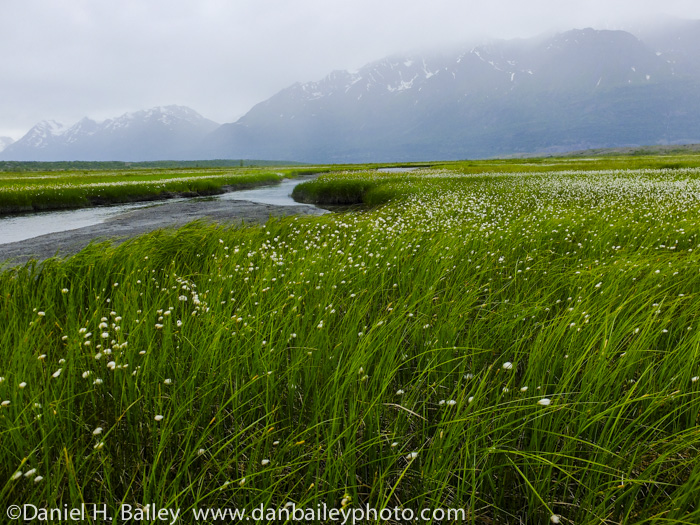

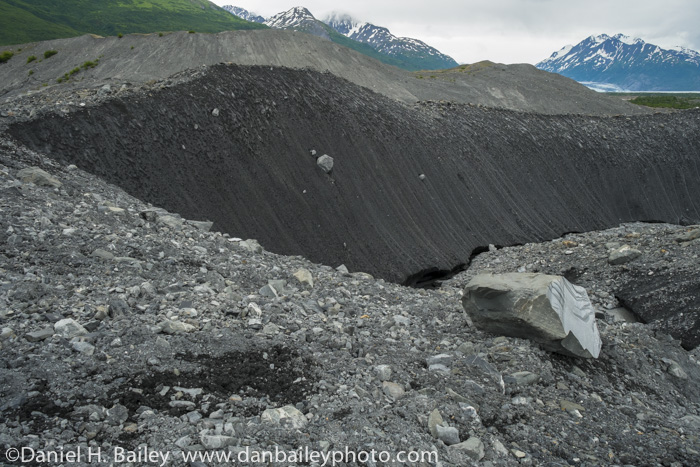
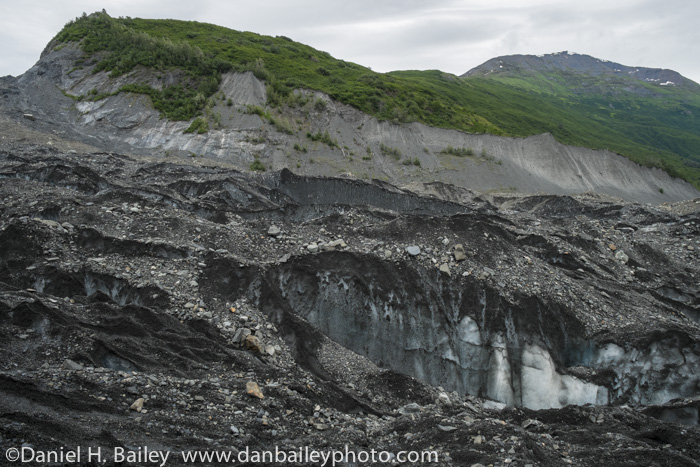
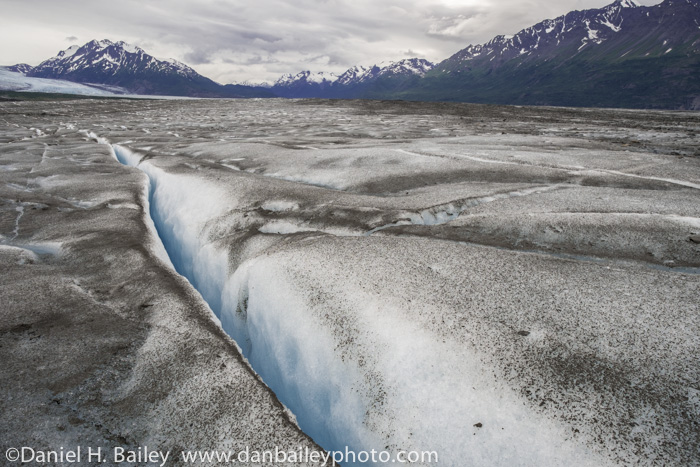
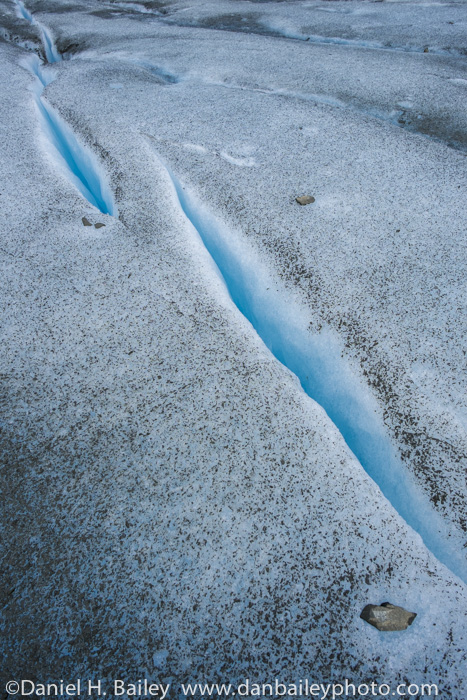
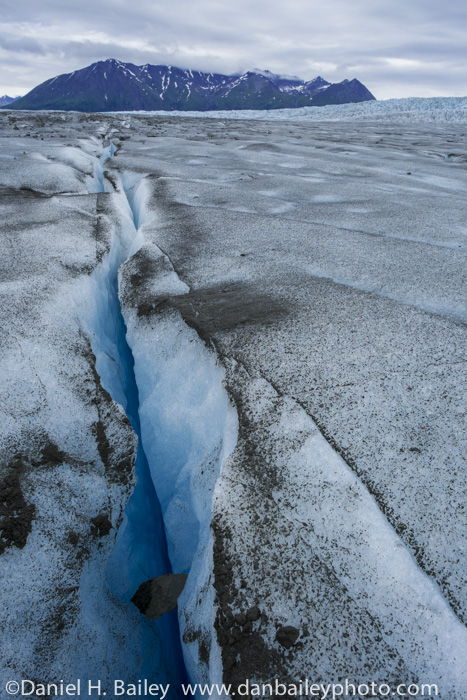
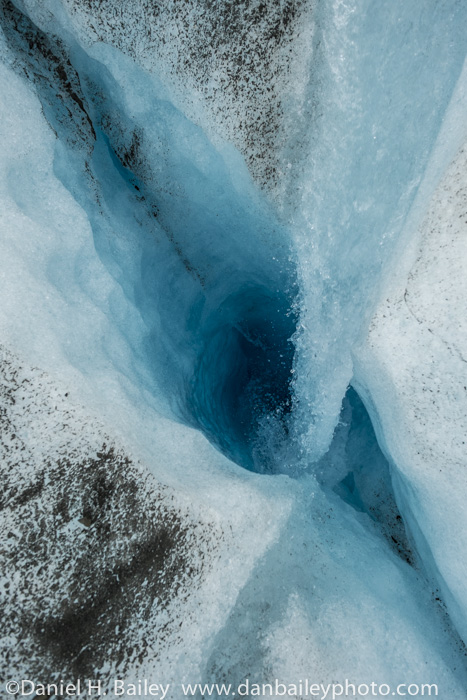
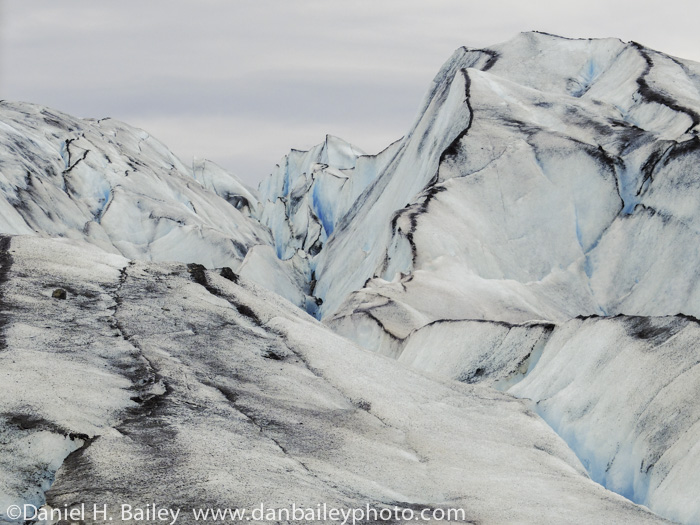

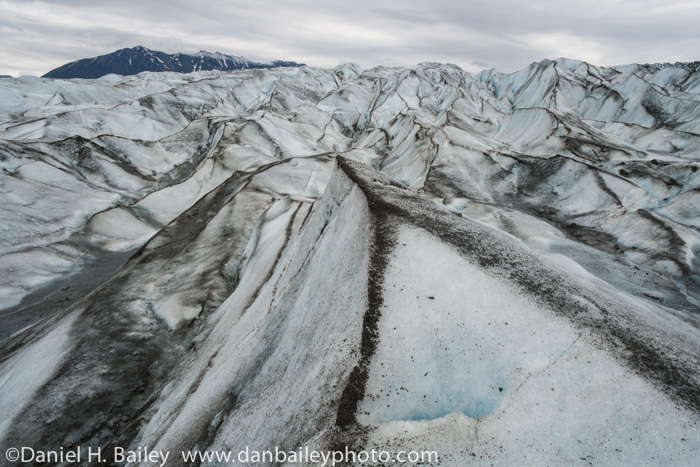
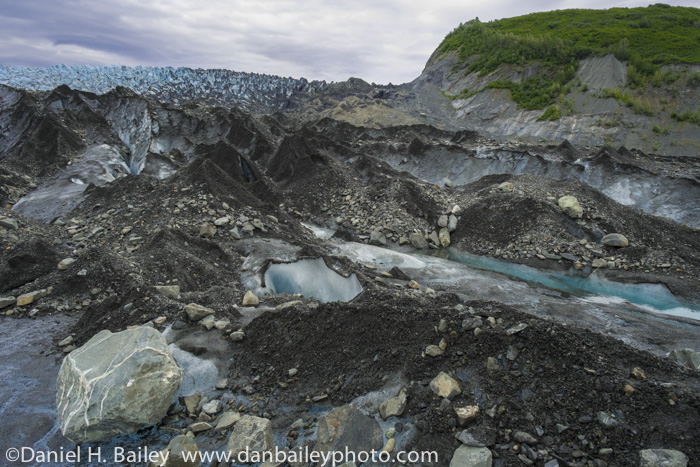
Looks like a really cool trip. I’ve always wanted to get out there. It’s frustrating that it’s so close, but so much work.
The plane definitely lessens some of the work, although it’s still by no means a gimme!
Looks like the wind turned your day trip into quite a little adventure. 8243 and 9898 are my favorite images. Interesting angle on the wing tie down rope considering your into the wind. No chocks, or can you lock the brake?
Fantastic story and exceptional photos Dan! Your adventurous spirit is a huge inspiration for us all to get out there and see these amazing places and make some extraordinary photographs while we’re at it.
I can’t lock the brake, but I tied the tail down and the other wing as well, faced the plane into the wind and secured the yoke with the seatbelts and a bungee cord so that the wind won’t blow the ailerons up and down. A strong head wind wouldn’t blow the plane backwards, it would lift the wings, so as long as you tie them down, it should be secure. In theory, anyway.
Thanks, Anne!! Appreciate the comment, especially from someone who has her own streak for adventure and exploration!
Wonderful post and images Dan! Quite an adventure! 🙂
[…] this photo while walking on the Knik Glacier with the Fujifilm XE-1. You can read more about this Alaska bush flying, hiking adventure here. _DSF9912.jpg Daniel H. Bailey's Adventure Photography Blog -Exploring the world of outdoor […]
[…] Ice Man Dan Bailey went out of house with his X-E1 and X20, took a Cessna and flew to the Knik Glacier to shoot some shoot some icescapes. He shared his images at the FR-twitter page. You can see them here at Dan Bailey’s website. […]
[…] year, I managed to find strip that gave me hiking access to the Knik Glacier, and lately, I’ve been trying to find a way to get out to the Lake George Glacier, which is […]
[…] The whole aviation thing has added a giant new dimension to my photography. I absolutely love shooting aerials and I feel that they’re some of the my best images to date. Here’s a recent aerial of the Chugach Mountains that we made together earlier this spring. You can read the entire post about this particular flight here, see more aerial photos I’ve shot, and you can also read about some of the other adventures we’ve had together, like this one. […]
[…] adventure is when I land near a glacier and actually hike up on to the ice. I’ve done this on the Knik Glacier and the Lake George Glacier, and a couple weeks ago, I hiked all the way up onto the Triumvirate […]